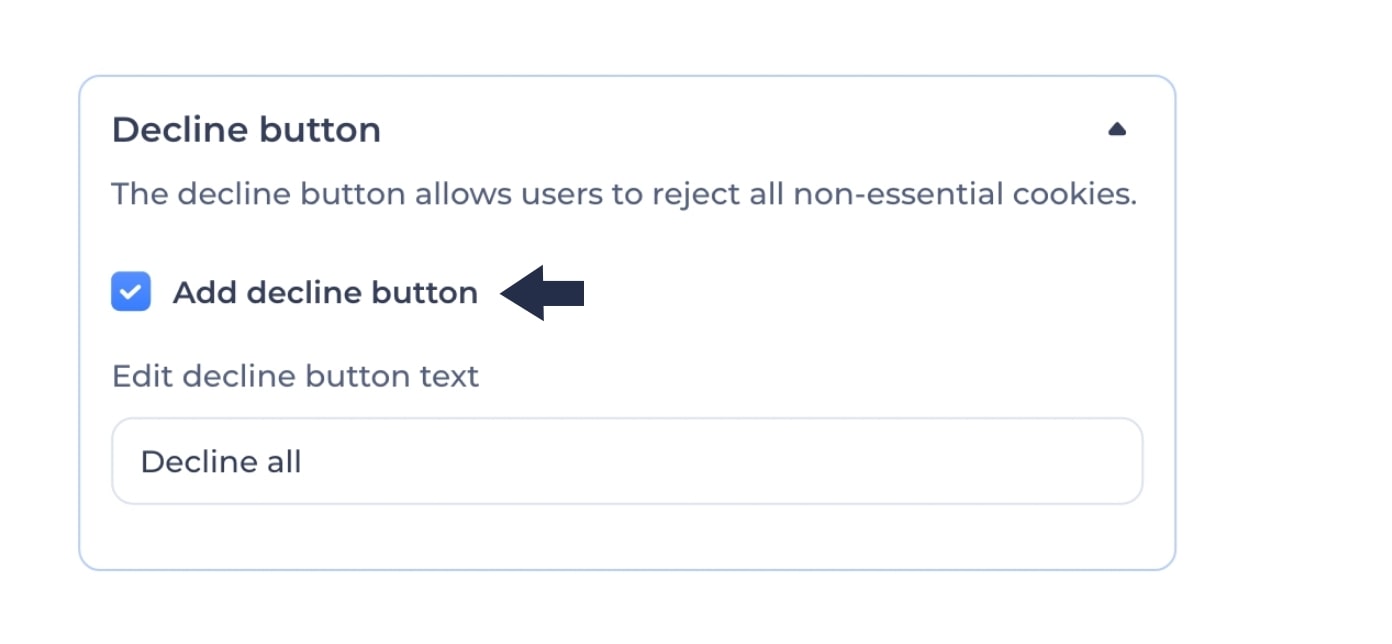Explore AI
Learn
With Renderforest paid plans, you can enable GDPR compliance for your website.
Note that the information contained herein should not be relied upon as legal advice. We recommend that you seek legal advice for additional help.
The General Data Protection Regulation (GDPR) is a European privacy and security law that is designed to protect visitors’ personal data. We recommend enabling GDPR compliance if you have visitors from the EU. To ensure your site is GDPR-compliant, please follow the steps below:
Go to the Cookies tab from Website settings, select the GDPR cookie banner and click the toggle to enable.
Include brief information on why your website stores cookies. Let your visitors know what they’re agreeing to or accepting by taking some action.
Click on the accept button field to edit the permission text if needed. Note, this button is required and cannot be deleted.
Click on the privacy policy field and tick the checkbox to add a privacy policy button to the banner. Edit the button text if needed, and add a link to it. You can link an external URL or the privacy policy page of your website. You can also add a privacy policy link to your website footers by ticking the “Add ‘Privacy Policy’ link to footer components” checkbox. Note, to use this option, your website should have at least one footer component.
Click on the cookie settings field and tick the checkbox to add a settings button to the banner. Edit the button text if needed. When your visitors click on the Settings button, a pop-up will appear to manage the cookie preferences. To customize this pop-up, click on the “Customize pop” button.
Click on the decline button field and tick the checkbox to add a decline button to the banner. Edit the button text if needed and save your changes.
The cookie settings pop-up appears when your visitors click on the settings button on the banner. With the help of this pop-up your visitors manage their cookie preferences. To customize the pop-up please follow the steps below:
Edit the title filed to name the pop-up. Try to make it short and clear. In the description field give a brief information about why is the pop-up for. Meanwhile edit the confirm button text if needed.
Click on the privacy policy field and tick the checkbox to add a privacy policy button to the banner. Edit the button text if needed, and add a link to it. You can link an external URL or the privacy policy page of your website. You can also add a privacy policy link to your website footers by ticking the “Add ‘Privacy Policy’ link to footer components” checkbox. Note, to use this option, your website should have at least one footer component.
When you’re all set, this is how the Cookie settings pop-up and the GDPR cookie banner will look to your site visitors.
Privacy Policy is a statement that explains what kinds of personal information you collect from your website visitors and how you use this. If you collect personal information like names, email addresses, IP addresses, session activity, and payment details, we recommend including a complete privacy policy section or page on your website. Please follow the steps below to learn how:
Go to the components section. Click on the Privacy Policy category and pick the component you like.
Everything in the components is customizable. You can change the colors, styles, images and type your own text.
Before you write a privacy policy notice, we recommend seeking legal advice to ensure it meets all legal requirements. However, here are the most important topics you should consider while creating your website’s privacy policy.
Disclose the type of personal information your website collects, such as names, phone numbers, email addresses, IP addresses, and so forth. Also, clarify that the amount of information they provide is completely voluntary.
Give a detailed explanation of how you store and use the personal information you’ve collected. Your privacy policy should further describe when and how you may share user information with third-party services.
If your website uses cookies, web beacons, or any other tracking tools, clearly explain what tools they are and what personal information they store.
Your privacy policy notice should detail how long the stored information will be kept. You should also explain what will happen to the information when you have no ongoing need to process it.
Let your visitors know that you are liable to make updates from time to time and that you will notify them about the changes.
Your visitors should know where and how to contact you if any questions or concerns arise about the privacy policy notice. Your privacy policy should include accurate contacts such as email address, phone number, postal address, etc.
















